
Section C Old Testament
Chapter 20 - David’s Palace (990 BC)
Eilat Mazar has been excavating on the site of King David’s palace since 2005. She has uncovered a large building that sat above the Jebusite wall (the Stepped Stone retaining wall). The Jebusite wall was built between 1200 and 1000 BC, and the large building, known as the Large Stone Structure, was built just after 1000 BC during the reign of David. Mazar identified this Large Stone Structure as the royal “House of Cedar” which was King David’s palace as described in 2 Samuel 5:11:
Now Hiram king of Tyre sent messengers to David, along with cedar logs and carpenters and stonemasons, and they built a palace for David.
– 2 Samuel 5:11-12
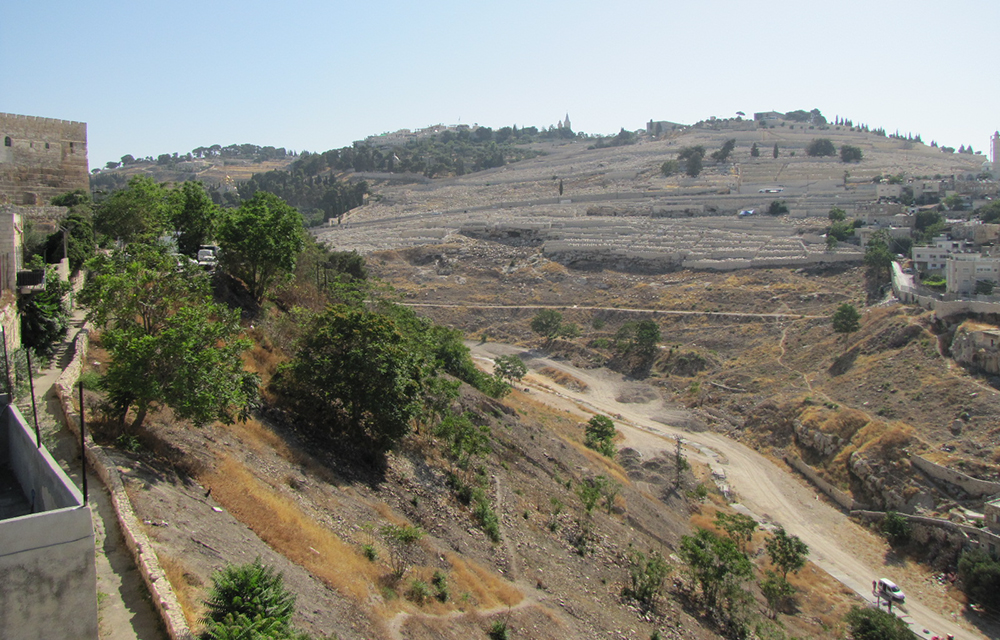
This is a view from David’s palace looking down into the Kidron Valley. The Mount of Olives and its three summits can be seen to the right running along the Kidron Valley. The southeast corner of the Temple Mount can be seen on the left edge of the photo.
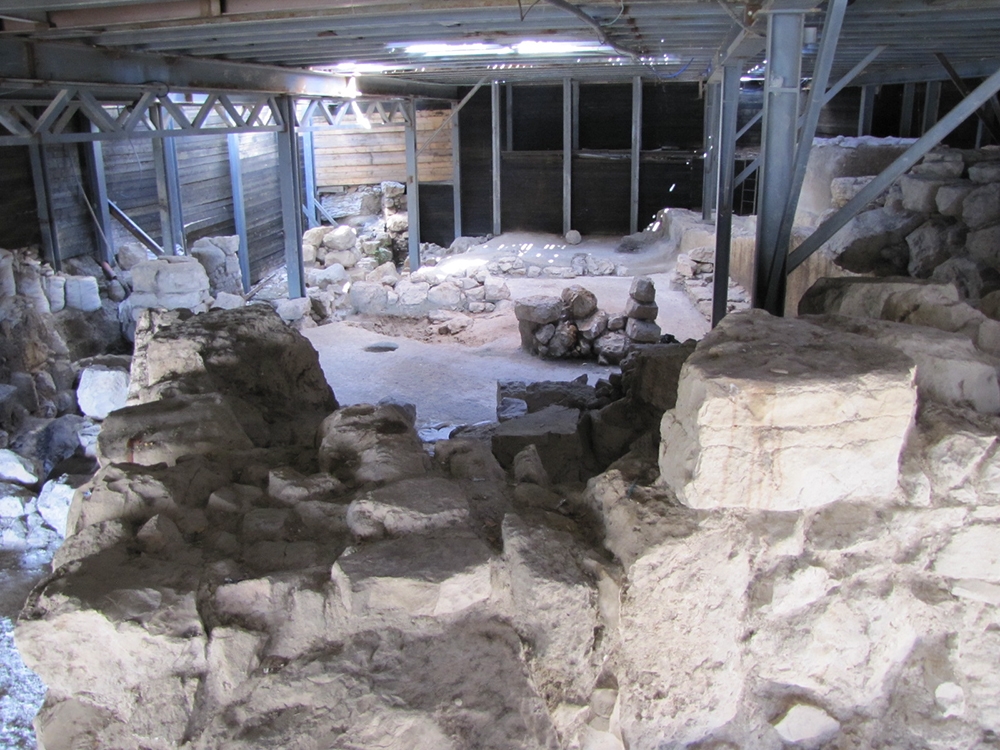
Inside the Large Stone Structure that sits on top of the Stepped Stone Structure. This Large Stone Structure has been identified as the palace of David. The pottery uncovered here indicates it was not built until the time of David, around 1000 BC.
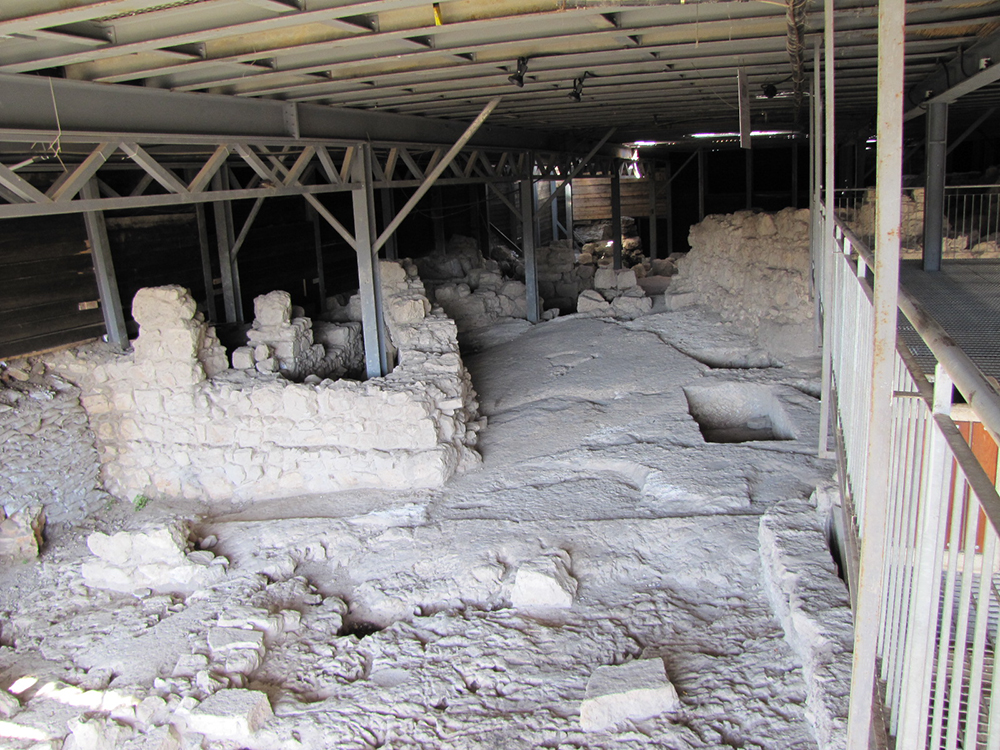
Standing inside David's palace looking at the excavated walls.
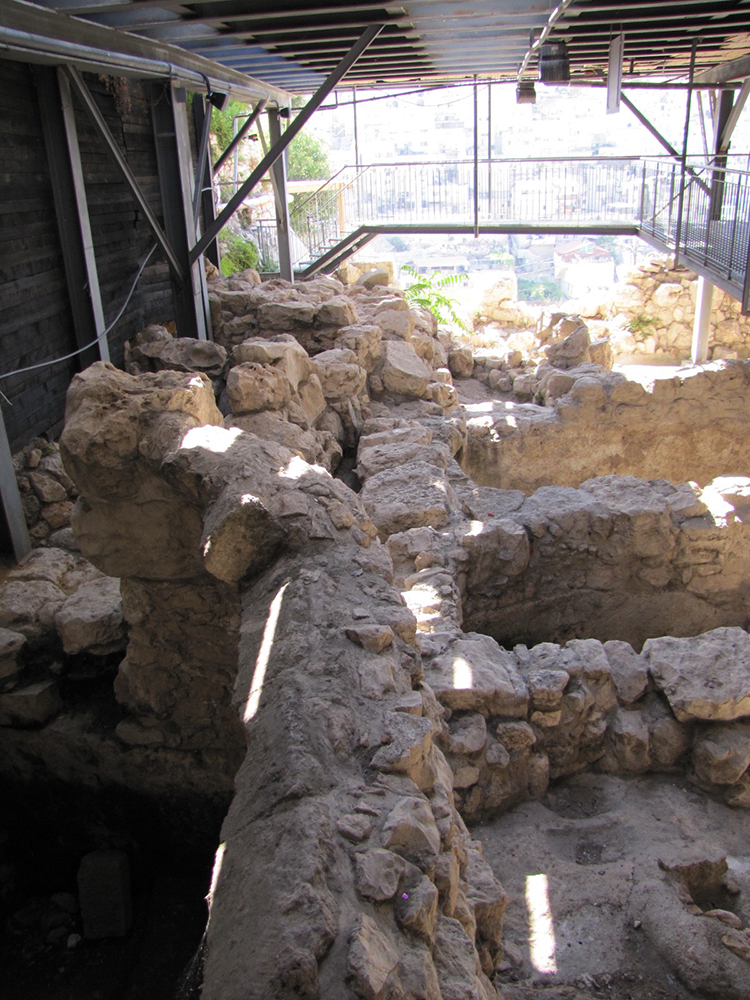
Looking along a wall of David’s palace toward the east.
It is worth noting that David’s palace was new construction in his day. The Jebusites’ former fortress that he had taken was left standing. David moved into that Jebusite fortress after his conquest of Jerusalem and lived there until his palace was built:
David then took up residence in the fortress.- 2 Samuel 5:9
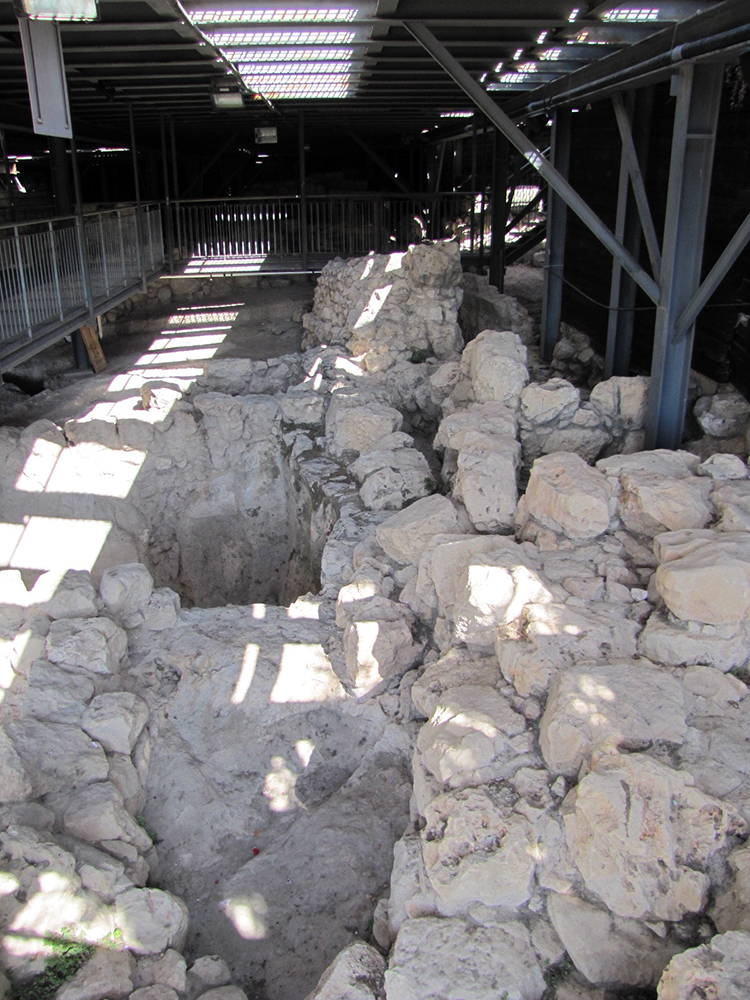
Inside David’s palace, also known as the Large Stone Structure, on the top of the Stepped Stone Structure.
This Jebusite fortress would have sat to the south of the new palace, guarding the northern wall of the old Jebusite city. This means David’s palace would have originally been built outside the walls of the city on the north. David’s palace was beautiful and luxurious, but when the Philistines invaded the land to assassinate him he returned to the protection of the old fortress within the walls of the city:
When the Philistines heard that David had been anointed king over Israel, they went up in full force to search for him, but David heard about it and went down to the stronghold. - 2 Samuel 5:17
The “stronghold” could also be interpreted as one of the wilderness hideouts in the land of Judah that David had used during his years fleeing from Saul. If that is the case, it is most likely Masada. But, then the questions could be asked, “Why would David flee the strong fortifications of Jerusalem?” and “Why would David abandon his city and his people?” But, if “stronghold” refers to the fortress of the Jebusites, we have confirmation as to the location and identification of the fortress, and the palace, which was located higher up on the Eastern Hill in the Ophel.
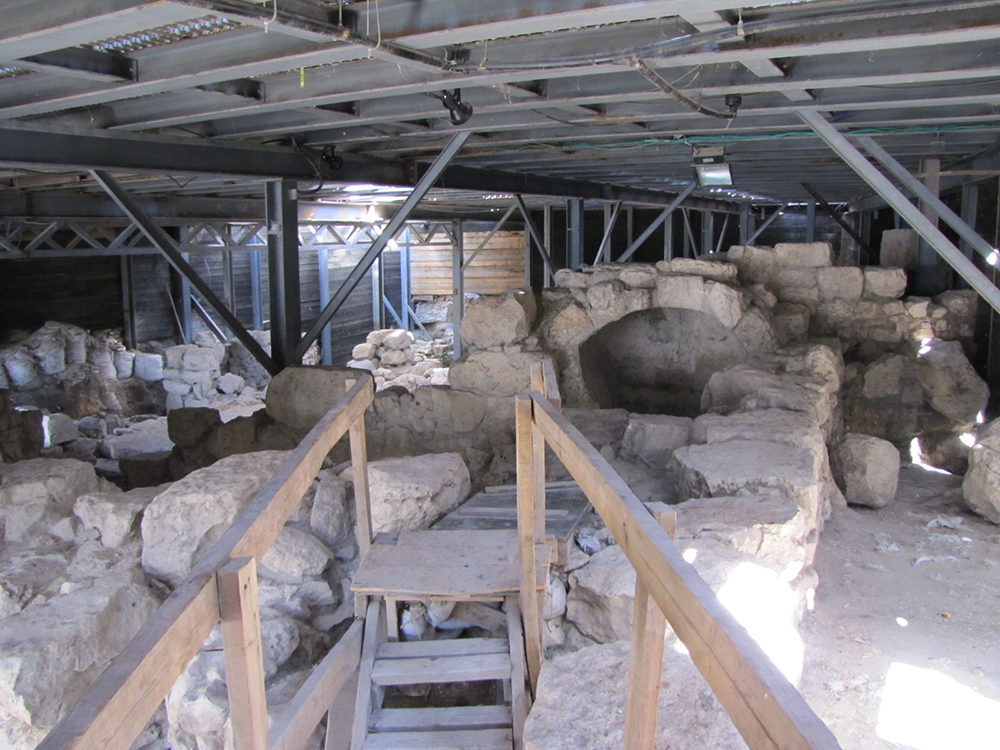
The walls of David's palace in the northwestern part of the excavation area looking west.
Underneath the Large Stone Structure are remains most likely left from the events described in Judges 1:8, which were also the subject of some of the Amarna Letters sent to Egypt asking for help.
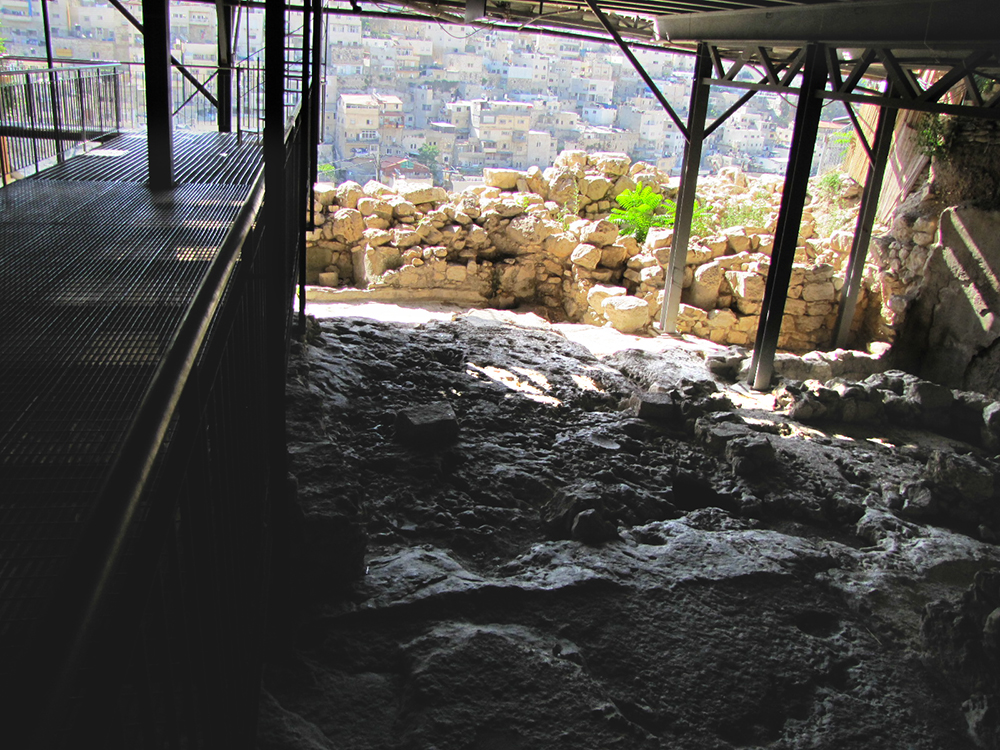
Looking at the wall at the top of the Stepped Stone Structure from David's palace.
The men of Judah attacked Jerusalem also and took it. They put the city to the sword and set it on fire. - Judges 1:8
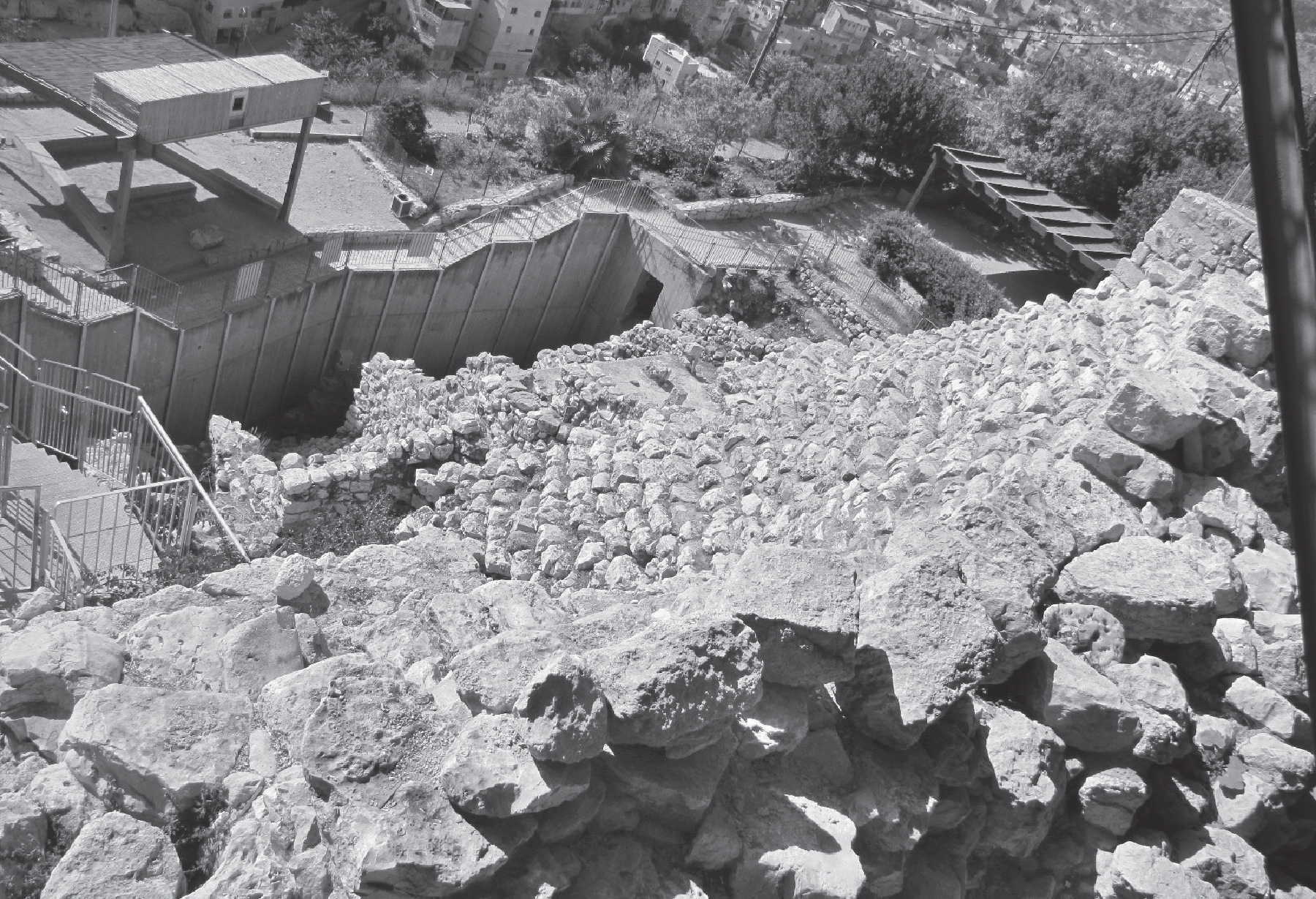
Looking down from the top of the Stepped Stone Structure from David's palace. Notice how far down the Kidron Valley is. The House of Ahiel can also be seen near the middle of the photo. David would be able to see the roof of this house and many others from his palace. To the far right of this photo we can see a portion of the wall built by Nehemiah.